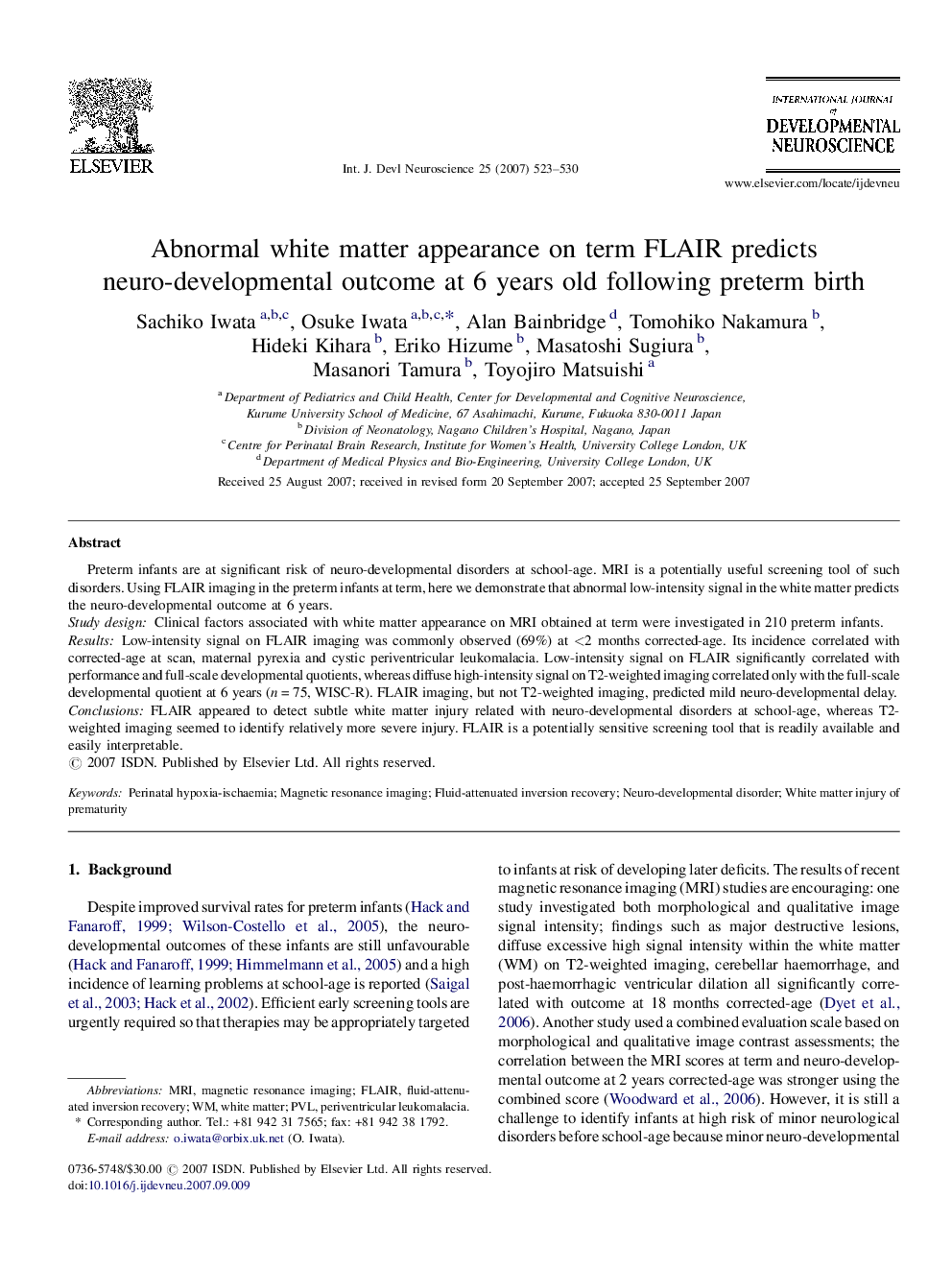| Article ID | Journal | Published Year | Pages | File Type |
|---|---|---|---|---|
| 2787106 | International Journal of Developmental Neuroscience | 2007 | 8 Pages |
Preterm infants are at significant risk of neuro-developmental disorders at school-age. MRI is a potentially useful screening tool of such disorders. Using FLAIR imaging in the preterm infants at term, here we demonstrate that abnormal low-intensity signal in the white matter predicts the neuro-developmental outcome at 6 years.Study designClinical factors associated with white matter appearance on MRI obtained at term were investigated in 210 preterm infants.ResultsLow-intensity signal on FLAIR imaging was commonly observed (69%) at <2 months corrected-age. Its incidence correlated with corrected-age at scan, maternal pyrexia and cystic periventricular leukomalacia. Low-intensity signal on FLAIR significantly correlated with performance and full-scale developmental quotients, whereas diffuse high-intensity signal on T2-weighted imaging correlated only with the full-scale developmental quotient at 6 years (n = 75, WISC-R). FLAIR imaging, but not T2-weighted imaging, predicted mild neuro-developmental delay.ConclusionsFLAIR appeared to detect subtle white matter injury related with neuro-developmental disorders at school-age, whereas T2-weighted imaging seemed to identify relatively more severe injury. FLAIR is a potentially sensitive screening tool that is readily available and easily interpretable.
